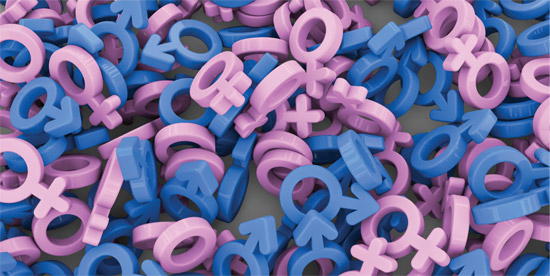
- Deepali Pendse
- Head of Corporate Treasury Sales, Southeast Asia, Bank of America Merrill Lynch
by Deepali Pendse, Head of Corporate Treasury Sales, Southeast Asia, Bank of America Merrill Lynch
The transitional nature of the Asia Pacific treasury space lends itself to new ideas, innovative platforms and enhanced practices better than at any other time in recent history. This transition is being seen at the strategic level, being rolled out at the technology level and more recently, this evolution is occurring at the cultural level. Embracing positive change has become a core value in the treasuries we talk to every day.
This transitional phase provides a clear opportunity to address one of the biggest issues in the global workforce, that of gender equality. Across the region, progress has been made. Currently, there are several positive trends addressing gender equality across Asia Pacific:
a) Companies have implemented programmes to fix structural biases against women and support their full participation in leadership and
b) Considerable time and resources are being invested in mentors and developmental opportunities.
Even with the above commitments, these same companies are still observing leaking pipelines at mid-level to senior level. This tells us that, perhaps, gender equality is being addressed at a junior to mid-level in certain functions/companies, but it still remains to be addressed in the mid to senior level representation.
Women make up 40% of the global workforce, with double-digit growth in certain countries. However, women only represent 3% of Fortune 500 CEOs and less than 15% of corporate executives at top companies worldwide. Viewed holistically, gender equality can no longer be considered purely a 'women's issue,' with corporations of all sizes and sectors treating this as more of a leadership issue
The benefits of this change remain to be seen in the form of redefining financial services workplace, influencing board decisions, affecting the broader global economy and strengthening the culture of the international workforce. The business case for greater equality is clear. Across both corporations and financial institutions, expanding the number of women leaders means more diversity of thought, diversity of leadership style, and diversity of perspective to an organisation.
Ultimately, when the dots are connected, any given corporation has a greater ability to bridge gaps with clients, solve problems and enhance productivity. When these facts are considered, an extremely powerful argument in favor of supporting gender equality – at all levels – seems almost impossible to ignore.
Ability to change
The treasury function is ripe to take a leadership role, particularly in Asia Pacific. This plays to the existing strengths of the treasury function and its ability to drive change on a wider scale.
In Asia Pacific, which has a rich cultural diversity, an evolving corporate culture and expanding commitment to innovation, the opportunity to address gender inequality is great. At Bank of America Merrill Lynch we see clear scope to address existing imbalances by creating a richer dialogue both with internal employees and externally, with our clients. As the treasury function in Asia Pacific positions itself as a more strategic component in any given organisation, we believe this industry can rise to the challenge of delivering meaningful change at the corporate level.
The regional treasury space provides the perfect environment to push this forward-thinking agenda. The transition theme in the region’s rapidly growing and ever-sophisticated treasury arena is evident. This provides a here-and-now opportunity to take a leadership role in promoting gender equality, and ensures that the role of the treasury department continues its strategic transition with new ideas and viewpoints.
Given the breadth of female talent and executive representation in many of the region’s largest and most complex finance departments, women in treasury are uniquely positioned to prompt greater debate on the issues that will tackle the legacy inequality issues at the leadership level. They are positioned to serve as a champion of diversity and inclusion campaigns and lead discussions at the management level to take this business critical issue to the next level. And significantly, many women in treasury are aware of the main issues that need to be tackled to make progress on gender issues in their space and more willing to share their views.
“Representation of women at senior levels across the treasury space is stable but low compared to the number of men,” says one director of treasury at a multinational. “However, at the junior to mid level, women are represented well. There is clear scope to address this imbalance given the level of talent in this industry.” [[[PAGE]]]
“Within our organisation, representation at the senior management level is still pretty much male dominated, although this has improved over the years. We now have female representation at executive committee level, which is extremely positive” adds Ng Wai Ling, general manager, Group Treasury and Corporate Office, International SOS.
These sentiments are consistent across the treasury function and the broader corporate space in Asia Pacific.
A compelling story
In partnership with Community Business, an international research organisation, Bank of America Merrill Lynch recently sponsored the Gender Diversity Benchmark for Asia. The regional results tell an extremely compelling story on the issue of gender inequality in the workplace. The findings show that there is a general upward trend in the representation of women in the workplace in Asia since 2009 and 2011, but that work still needs to be done.
According to respondents, while gender equality is recognised as a business-critical issue at corporations and financial institutions across the region, the overall representation of women at senior levels remains low when compared to the number holding low to mid-level roles. Across the region, women hold 24.3% of the senior positions of the corporations surveyed, which tells us that efforts by companies to promote women talent have not fully translated into gender equality at the senior levels.
Clearly, while encouraging progress in junior and middle management in Asia continues to be made, ensuring that progress is mirrored at all levels is equally important. To put this disparity in further context, in all major markets in Asia Pacific, the number of women in senior levels is well below corresponding representation in the broader labour force, particularly in markets such as China, Hong Kong and Malaysia.
A leadership issue
For gender inequality to get the buy-in of executive management, perceptions of women in the workplace need to evolve. Specifically, research shows that the goal for corporations should be to remove as many of the obstacles and barriers as possible and level the playing field, so that women choose and are able to pursue their career with the company.
“In the corporate world, there are legacy gender issues that have created many barriers for women in the workplace,” says Michelle Lim, vice president, Finance Asia Pacific, Kemin Industries. “For example, obligations and commitment to family, conventional values, the availability of childcare support and various social pressures have all been traditional issues that have confronted the elevation of many women in the workplace. However, attitudes are clearly changing.”
The Gender Diversity Benchmark Study for Asia supports this view but also demonstrates that companies across the region are recognising that long-held views on women in the workplace are counterintuitive. Significantly, companies across the region continue to experience a significant loss of women from one level to the next, with many respondents citing the aforementioned assumptions are driving their decision to leave the organisation. The average rate of decrease across the region is 30.7% from junior to middle levels and 37.8% from middle to senior levels.
On the other hand, companies have taken commendable steps to create an enabling environment for their female employees. In particular, maternity leave, paternity leave and flexible work arrangements are offered by virtually all companies in all markets, whilst women’s networks, on-ramping support and professional development programmes are also widely embraced by companies.
One of the early criticisms of gender diversity has often been that not enough men are in the room or engaged in the conversation. The reality, men still continue to hold the majority of senior roles and hold positions of influence. Therefore, the importance of men involved in this issue from both treasury and financial institution level is clearly part of the solution.
The key thing is ensuring we create an environment where everyone – irrespective of who they are – can fulfill their potential. Mentoring programmes often do not lead to actual promotions and appointments, compared to males, research shows. The question then that is being asked is “Are women being over- mentored and under-sponsored?”
Emerging Women in Treasury
To support the role of greater equality as core to the future success of the treasury space, Bank of America Merrill Lynch Global Transaction Services recently launched the Emerging Women in Treasury program with select chapters now operational in several markets.
We identified a clear need in the market to help develop and nurture the next generation of women treasurers in Asia, which can be supported by our global platform and diverse local expertise. Participants will learn, debate and connect across a range of relevant global topics and issues – necessary for unlocking high potential talent operating in this space. Specifically designed for the upcoming woman professional in treasury, participants will connect with industry captains and the latest global financial and treasury insights and strategies, thus enhancing the knowledge base and supporting professional career development of our clients.
Promoting greater equality is helped by the launch of new and innovative programmes, but for this to succeed, the buy-in is necessary of an industry undergoing its own transition. We need to give women the same opportunities so they can enter the door as well as the same opportunities to do well when they are through the door.










